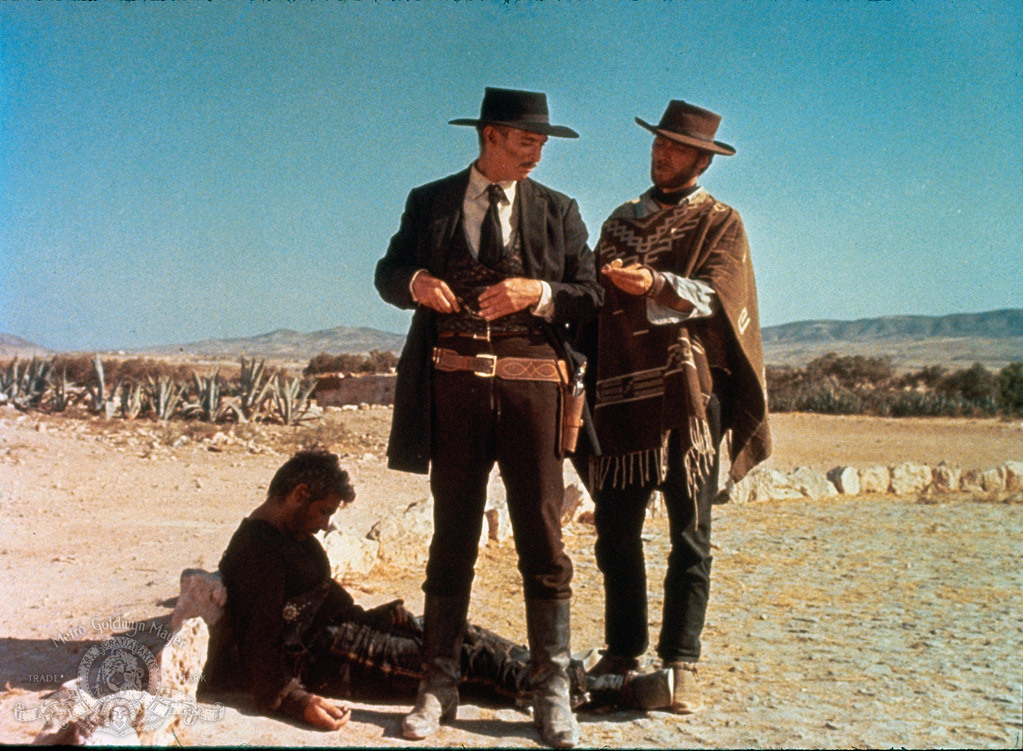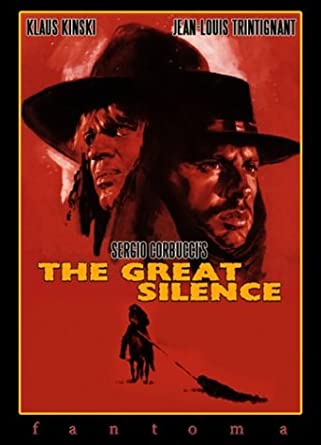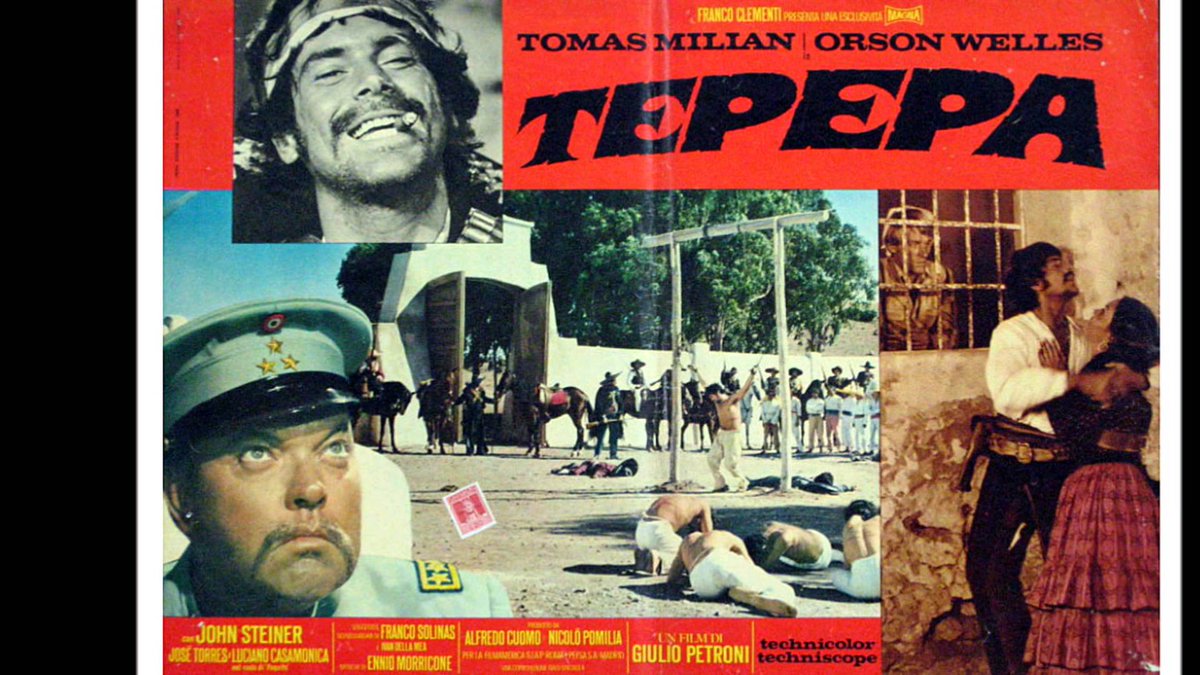#ClintEastwood turned 93 yesterday; a 🧵on Spaghetti Westerns, Clint's role in 'Per un Pugno di Dollari' (A Fistful of Dollars) and the subversive after-effects of the film that re-defined the Western. #ClintEastwood93today 

In the summer of 1964, a TV actor who starred in a prime time Western serial was looking for distraction in films. The show was 'Rawhide', and its star Clint Eastwood, who played the impulsive, sometimes hot-tempered, but generally sweet-natured 'Rowdy Yates' felt he’d stagnated. 

So, at 34, Eastwood decided upon a risky gamble: take a leap into the unknown by imposing trust in an obscure Italian director named Sergio Leone and travel to Rome to do an obscure “European Western” called 'Per un Pugno di Dollari.' 

The script, which he received on typewritten onionskin pages, was a rip-off of Akira Kurosawa’s 1961 classic 'Yojimbo' that pitted the anti-heroic protagonist against two warring factions struggling to gain supremacy of a border town. 



The budget was pitiful, shooting conditions rough, and the script, largely improvisational. Eastwood, as his biographer Richard Schickel notes, was advised by colleagues to collect his paycheck first as the Italians were regarded as notorious fly-by-night operators. 

Prior to Eastwood, Leone had approached Charles Bronson and James Coburn (believed to be his ideal choices) for 'Fistful' only to be turned down. Both actors later were to do their best work for Leone.
“It was just about the worst script I had ever seen”, Bronson had said.

“It was just about the worst script I had ever seen”, Bronson had said.


But Eastwood trusted his instincts, taking this harsh and humble venture in his stride, getting to know Leone on location in Spain. He particularly admired cinematographer Massimo Dallamano (later a director in his own right) on the way the latter played with light. 



The film wrapped up and then began a long period of uneventful lull: Eastwood quietly returned home; the picture apparently forgotten and buried in the Spanish sun. #ClintEastwood #westerns 

Unbeknownst to Clint, a small miracle was taking place in Italy. 'Per un pugno di dollari', which first opened in rural Italy, (its violence deterred producers from taking a chance in the sophisticated urban North) was turning out to be a sleeper. 

One of the producers Arrighi Columbo excitedly called up Clint, apologizing for the long silence and pressing him to do a sequel. Eastwood demanded a print of the film. While that followed, the film's soundtrack by one Ennio Morricone, credited 'Dan Savio' in the film, arrived. 

Clint hadn't heard anything like it before. A phenomenally atmospheric, unconventional mix of choral moans, natural sounds, Jew's harp, twang of the fender guitar, Morricone's score turned the Dmitri Tiomkin-ish sounds of classic John Ford & Howard Hawks' westerns on their head. 

The rest is hoary history. Eastwood returned to Rome to collaborate with Leone on For a Few Dollars More (1965) and The Good, the Bad and the Ugly (1966).
The “Dollars Trilogy” created the ‘Man with no Name’ and made Eastwood a superstar from the wrong side of the tracks.

The “Dollars Trilogy” created the ‘Man with no Name’ and made Eastwood a superstar from the wrong side of the tracks.


After 'Fistful's' grand success, yet another twisted version of 'Yojimbo' followed when Leone's friend, Sergio Corbucci, "a primitive Marxist" did his take on Kurosawa, directing the fantastically stylized cult masterpiece 'Django' (1966). 

Apocalyptic and anti-clerical, pushing the envelope on violence (the famed ear-splicing scene, mutilation of the hero's hands) to new heights, Corbucci’s film made a superstar of the coffin-dragging Franco Nero.(The film’s outre violence ensured its ban in Britain for 25 years) 

'Fistful's US release in 1966 saw American critics loudly decry that Eurowesterns were destroying the Western genre -America’s foundation myth, its celluloid “Manifest Destiny”. Leone's films were panned,while the Spaghetti sub-genre was derided by elitist critics. 

Who were these Italians to teach us how to make a western? And why defile sacred Yojimbo? thus objected critics. But 'Yojimbo' itself owed much to novelist Dashiel Hammett’s 'Red Harvest' and was similar in plot to Budd Boetticher’s 1958 western 'Buchanan rides Alone.' 



With 'Fistful', Leone had merely carried a process in the development of the Western to its logical end. This process had started in the late 1940s with US westerns undergoing a change as the Cold War loomed large and the world lurched into the Atomic age. #Hollywood #Cinema 

The early 1950s, with the outbreak of the Korean War and the unleashing of McCarthyism saw a crumbling of traditional frontier myths with complex themes like racism, incest, anti-Red hysteria beginning to feature in the 'Adult Westerns'. #Hollywood #McCarthy 







Screen legends James Stewart and Henry Fonda, personifying traditional American values, appeared in hard-bitten films directed by Anthony Mann and Delmer Daves, while Randolph Scott played the morally conflicted loner in austere 'Chamber Westerns' by Budd Boetticher. 



As US Westerns turned stale by early 1960s,failing to capture the sense of disillusionment and sweeping the country as it stumbled into Vietnam, the Spaghetti W. struck a raw nerve with audiences across North America & Europe, while being tremendous influential in Asian markets. 

While many of the 550-odd Spaghettis made between 1961 and 1977 were sub-par, the best ones often masked a great deal of skill and subtlety beneath their crude veneers. 



Most importantly, Italy’s shameful tryst with Fascism and the humiliation endured by its people in a post-war world decisively shaped the psyche of these films. #Italian #westerns #Fascism 



The failure of the Left in shaping policy in post-war Italy found expression in anti-Fascist, left-wing themes in Euro-westerns like Sergio Sollima’s 'The Big Gundown', Damiani’s cerebral 'A Bullet for the General' and Corbucci’s seminal 'The Great Silence.' 

Moreover, a Spaghetti Western’s shoestring budget coupled with their use of the disenfranchised Gypsy populace in Spain’s Almeria and Andalucia regions made it fundamentally a proletarian movie-making exercise. 

Sam Peckinpah, whose films led to a critical reappraisal of violence in cinema, remarked that “only the climate created by Spaghetti westerns” enabled him to make 'The Wild Bunch' (1969). #Hollywood #films 

The films boosted sagging careers of faded American stars and opened up new vistas for Italian and European actors. Bit players like Lee Van Cleef became overnight icons, while Cuban actor Tomas Milian struck gold playing oppressed campesinos. 

Had Leone not made 'Fistful',India would not have had its hallowed “curry western” 'Sholay'. The family massacre scene is lifted lock, stock and barrel from 'Once Upon a Time in the West' while Amjad Khan’s Gabbar Singh is modeled on Gian Maria Volonte’s performances.
None of this would have happened if Clint Eastwood hadn’t taken that plane in 1963 to Rome to meet Sergio Leone for a fistful of dollars. 



• • •
Missing some Tweet in this thread? You can try to
force a refresh

 Read on Twitter
Read on Twitter






